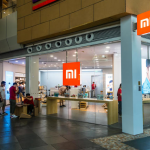Safeguarding your Digital Assets: Explaining Web3 Wallets
If you are looking into owning digital collectibles or simply entering the world of cryptocurrency, then you would need an extremely secure way to store your assets. As the world is increasingly moving towards a decentralized Web 3.0, a traditional cryptocurrency wallet might not cut it. Users are coming to prefer more secure and private alternatives to these wallets. This is where Web3 wallets come into the picture.
But let’s back up a little and dive into the history of cryptocurrencies and, consequently, Web3. Cryptocurrencies in their current form originated in the year 2008 with the innovation of Bitcoin. Built on blockchain technology, Bitcoin enabled secure transactions without intermediaries like banks. As time went on and many more cryptocurrencies cropped up, it became clear that crypto had a lot to offer and that it required advanced tech to support it.
Enter Web 3.0. Web3 is the next iteration of the internet which will be completely decentralized. This means that control will be democratized rather than in the hands of a single entity or organization. This would allow users to truly own their data and digital assets and make secure transactions. Web3 wallet development can be looked at as a gateway of sorts to this new version of the internet. Let’s delve a little deeper into it.
What are Web3 Wallets? How are they Different from Cryptocurrency Wallets?
A Web3 wallet allows its owner to safely store, manage, and use their cryptocurrencies and other digital assets. Web3 wallets are generally decentralized and non-custodial meaning that the user is in complete control of the private key that is used to access the wallet. This makes these wallets extremely secure since not even the developers of the wallet have access to the private key.
Another benefit Web3 wallets wield over their traditional counterparts is that they facilitate interaction with decentralized apps (dApps). This is why these wallets are sometimes referred to as dApp browser wallets, letting them connect seamlessly with marketplaces, lending platforms, and decentralized exchanges.
The Advantages of a Web3 Wallet
Apart from the key usages highlighted above, Web3 wallet development services equip the wallets with a wide range of features that make them highly desirable to use.
Convenience:
Topping the list is, of course, the convenience of Web3 wallets. These wallets make it possible for you to have all your digital assets at your fingertips, even when you are traveling. The wallets are also designed keeping in mind the novelty of Web3 technology. As a result, the interface is simple and user-friendly with intuitive handling being at the core.
Privacy and Security:
The blockchain technology that is the foundation for Web3 wallets ensures that they are extremely secure. Mechanisms like encryption and two-factor authentication are put in place to protect your assets from attack.
Control:
What makes Web3 so sought after is its emphasis on user autonomy and control. The decentralization allows for transactions to occur without intermediaries and middlemen. This gives control back to the end user in every way possible.
How do you choose the Web3 Wallet?
With all your digital assets on the line, there are quite a few factors that need to be considered before selecting a Web3 wallet. We’ve rounded up a few for you to look into.
Security:
There’s a lot at stake when it comes to digital assets. Therefore, it is absolutely imperative that you select a developer who can deliver impeccable security. Always go with a team that uses state-of-the-art encryption techniques and has demonstrated impenetrable safety for digital assets. In the same vein, look for a Web3 wallet development service that comes with account recovery and backup.
Additional Fees:
When it comes to minting an NFT, there may be costs like gas fees and service fees involved in the process. Make sure that the developer you choose offers you the best price or that it is negotiable and/or customizable.
Compatibility:
Before you settle on a wallet, make sure that it is compatible with the blockchain network that you want to use. A wallet may have great features, but at the end of the day, it would not matter to you if it is not compatible with your chosen blockchain.
Simple User Interface:
An overly complicated UX is tiresome at the best of times. With Web3 being as new as it is and as we stand at the threshold of its mass adoption, it becomes more important than ever to consider the interface of the wallet. A good wallet should be easy to use and navigable with just a little bit of practice.
The Team:
As always, the team behind a project is vital. You could go with wallet developers with a provable track record of clients and whose reputation is stellar. A great way to gauge the general sentiments towards the project is to join its community (mostly active on Discord and Twitter) and get a lay of the land, so to speak.
While these are some key points to look out for, it is always important to (DYOR) do your own research and figure out what’s best for you and your needs. There is no one-size-fits-all approach, especially in the crypto world. That is perhaps why many Web3 wallet developers offer products that are completely customizable by the user. So use these factors as a guide and see what works for you.
Closing Thoughts
It is abundantly clear that Web3 is the future of the internet… And digital assets form a crucial, if not foundational, part of that internet. This being the case, secure and simple Web3 wallets are the need of the hour. Experiencing it now might give you an edge in the future when digital assets and cryptocurrencies may become the norm. So make sure you thoroughly look up everything Web3 wallets have to offer, choose a team to get you started and enter the wonderful world of Web3.














